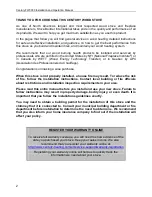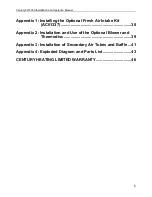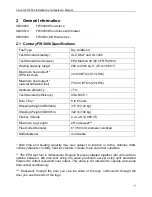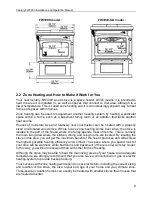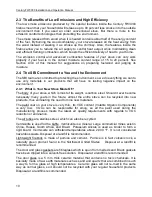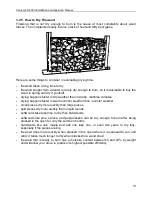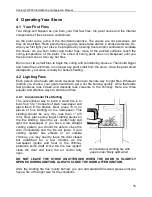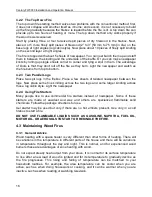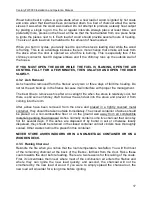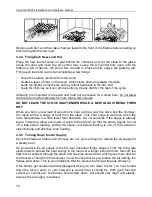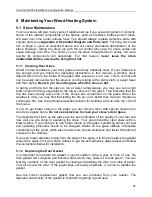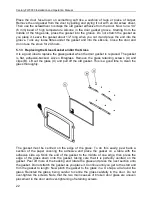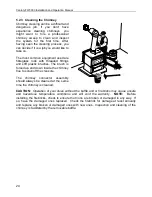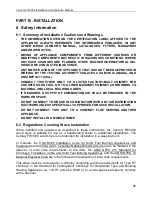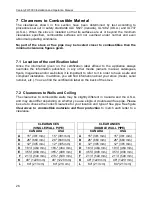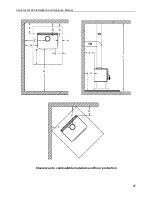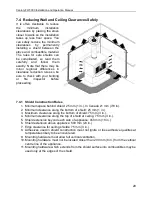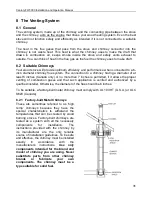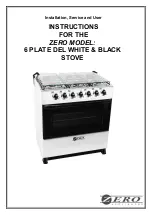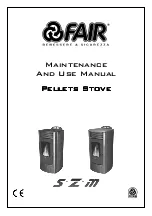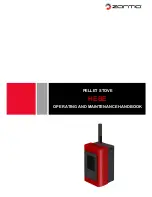
Century FW3000 Installation and Operation Manual
16
4.2.2 The Top Down Fire
The top down fire starting method solves two problems with the conventional method: first,
it does not collapse and smother itself as it burns; and second, it is not necessary to build
up the fire gradually because the firebox is loaded before the fire is lit. A top down fire can
provide up to two hours of heating or more. The top down method only works properly if
the wood is well-seasoned.
Start by placing three or four full-sized split pieces of dry firewood in the firebox. Next,
place 4 or 5 more finely split pieces of firewood (2” to 3” [50 mm to 75 mm] in dia.) on the
base logs at right angles (log cabin style). Now place about 10 pieces of finely split kindling
on the second layer at right angles.
The fire is topped with about 5 sheets of newspaper. You can just bunch them up and stuff
them in between the kindling and the underside of the baffle. Or you can make newspaper
knots by rolling up single sheets corner to corner and tying a knot in them. The advantage
of knots is that they don’t roll off the fire as they burn. Light the newspaper and watch as
the fire burns from top to bottom.
4.2.3 Two Parallel Logs
Place two spit logs in the firebox. Place a few sheets of twisted newspaper between the
logs. Now place some fine kindling across the two logs and some larger kindling across
those, log cabin style. Light the newspaper.
4.2.4 Using Fire Starters
Many people like to use commercial fire starters instead of newspaper. Some of these
starters are made of sawdust and wax and others are specialized flammable solid
chemicals. Follow the package directions for use.
Gel starter may be used but only if there are no hot embers present. Use only in a cold
firebox to start a fire.
DO NOT USE FLAMMABLE LIQUIDS SUCH AS GASOLINE, NAPHTHA, FUEL OIL,
MOTOR OIL, OR AEROSOLS TO START OR REKINDLE THE FIRE.
4.3 Maintaining Wood Fires
4.3.1 General Advice
Wood heating with a space heater is very different than other forms of heating. There will
be variations in the temperature in different parts of the house and there will be variations
in temperature throughout the day and night. This is normal, and for experienced wood
burners these are advantages of zone heating with wood.
Do not expect steady heat output from your stove. It is normal for its surface temperature
to rise after a new load of wood is ignited and for its temperature to gradually decline as
the fire progresses. This rising and falling of temperature can be matched to your
household routines. For example, the area temperature can be cooler when you are
active, such as when doing housework or cooking, and it can be warmer when you are
inactive, such as when reading or watching television.

